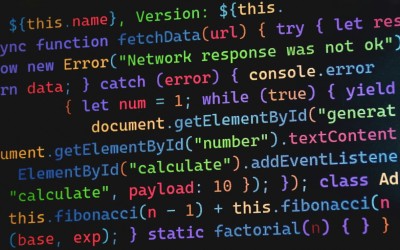In the ever-evolving landscape of artificial intelligence, humor represents a unique frontier. While AI has made remarkable strides in various domains, from chess to language translation, the ability to generate and understand humor remains elusive. The struggle of AI to deliver a punchline that resonates with human audiences is not just a curiosity; it poses a significant hurdle for the integration of AI into our daily lives. Understanding why AI jokes still fall flat, and why this is a problem, requires a deep dive into the mechanics of humor, the current capabilities of AI, and the broader implications of these comedic shortcomings.
Humor is a complex social construct that involves timing, cultural context, language nuances, and an understanding of human emotions. At its core, humor often relies on a shared understanding between the joke teller and the audience. This shared understanding is steeped in cultural nuances, idiomatic expressions, and sometimes even unspoken societal norms.
Theories of humor, such as the incongruity theory, which suggests that humor arises when there is a discrepancy between expectation and reality, highlight the sophisticated mental gymnastics involved in crafting a joke. Another prevalent theory is the superiority theory, where humor occurs as a result of feeling superior to the misfortune of others. The relief theory suggests that humor functions as a psychological release of built-up tension or suppressed thoughts. For AI to truly master humor, it must navigate these theories and apply them contextually, which is no mean feat.
One of the most significant challenges AI faces in humor is the understanding and application of context. AI models, particularly those based on machine learning, are excellent at pattern recognition but often lack the deeper understanding required to grasp context. Humor is heavily reliant on context, as the same joke can elicit laughter or fall flat depending on the situation, the audience, and cultural sensitivities.
For instance, a joke about the weather might be amusing in a region experiencing unpredictable weather patterns but irrelevant or even confusing in a place with a stable climate. AI's current models often lack the sophisticated contextual awareness needed to adjust their output to these kinds of situational nuances. This is partly because AI systems are trained on large datasets that may not capture the full breadth of human experience and partly because the algorithms are not yet equipped to process this information in the way humans do.
Current AI humor capabilities are largely driven by language models such as GPT-3 and its successors. These models are designed to predict the next word in a sentence based on a given input, and while they can generate text that appears coherent, they often struggle with subtler aspects of language that are crucial for humor. These models lack a true understanding of language; they do not comprehend irony, sarcasm, or double entendre in the way humans do.
Moreover, AI-generated jokes often lack originality. They tend to recycle existing jokes from their training data, leading to humor that feels stale or clichéd. This is not necessarily because the AI is incapable of creativity, but because the models are inherently conservative, favoring patterns that have been successful in the past over novel approaches. As a result, AI jokes often miss the mark, failing to surprise or delight human audiences.
Humor is deeply tied to cultural and social contexts, which vary significantly across the globe. A joke that is funny in one culture might be offensive in another. AI models, trained on diverse datasets, often struggle to navigate these cultural differences, sometimes generating content that is unintentionally offensive or inappropriate. This lack of cultural sensitivity is a significant barrier to AI's acceptance in roles that require nuanced human interaction.
Furthermore, the ethical considerations surrounding AI-generated humor are complex. Jokes that touch on sensitive topics, even inadvertently, can perpetuate stereotypes or reinforce harmful biases. As AI systems are increasingly deployed in customer service, content moderation, and social media, the potential for AI to generate or propagate harmful content becomes a pressing concern. Ensuring that AI can navigate these ethical waters is crucial for its successful integration into society.
The inability of AI to effectively generate humor has broader implications beyond just failing to amuse. Humor is a critical aspect of human interaction, serving as a social lubricant, a means of coping with stress, and a tool for building relationships. AI systems that lack this capability may struggle to engage users on a meaningful level, limiting their effectiveness in roles that require empathy and connection.
Moreover, the shortcomings of AI humor highlight the limitations of current AI capabilities more broadly. While AI can process vast amounts of data and perform complex calculations, it still struggles with tasks that require a deeper understanding of human experience. This gap underscores the need for continued research and development in AI, with a focus on enhancing its ability to understand and interact with humans on a more profound level.
Addressing the challenges of AI humor requires a multi-faceted approach. First, advancements in natural language processing and machine learning are needed to improve AI's understanding of context and cultural nuances. Researchers are exploring techniques such as reinforcement learning, where AI systems learn from feedback, and transfer learning, where knowledge gained in one context is applied to another, to enhance AI's capabilities in these areas.
Second, greater emphasis must be placed on the ethical training of AI systems. This involves curating datasets that are diverse and representative, as well as implementing robust feedback mechanisms to identify and correct biases in AI outputs. Collaboration between AI developers, ethicists, and cultural experts will be crucial in navigating these challenges.
Finally, fostering interdisciplinary collaboration between computer scientists, linguists, psychologists, and comedians can yield insights into the mechanics of humor that can inform AI development. By drawing on expertise from a range of fields, AI researchers can develop more sophisticated models that are better equipped to tackle the nuances of humor.
While AI jokes may still fall flat, this is not just a humorous footnote in the story of artificial intelligence. It is a significant challenge that highlights the limitations of current AI systems and underscores the need for continued innovation and collaboration. By addressing these challenges, we can pave the way for AI systems that are not only more capable of understanding and generating humor but also better equipped to engage with humans in meaningful and empathetic ways. In doing so, we move closer to realizing the full potential of AI, transforming it from a tool into a true partner in our daily lives.




